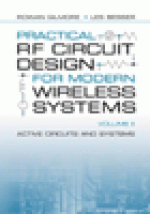At the earliest possible opportunity in an RF receiver it is extremely important to amplify a signal while adding the minimum possible extra noise. In RF amplifier design, optimal gain and low-noise performance cannot be achieved simultaneously. Thus a "low noise" amplifier (LNA) design compromises some gain performance in order to minimize the amount of internally generated noise added to the signal as it passes through the amplifier. Since gain is still an important factor, LNA designs are not necessarily optimized strictly for noise performance, but are a balance between the two requirements.
Self-study Guide: RF Small-Signal Amplifiers (LNA)
Submitted by rfrobenius on


